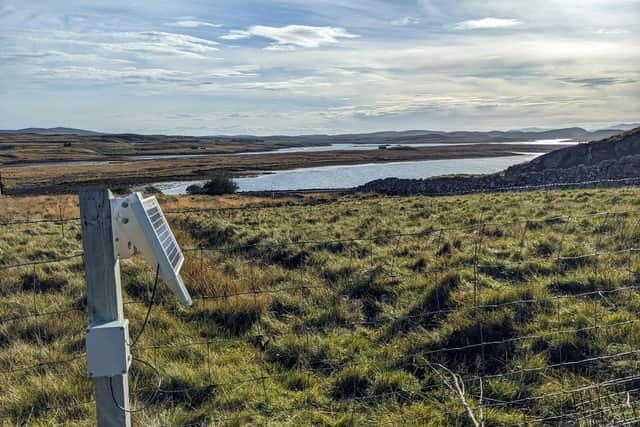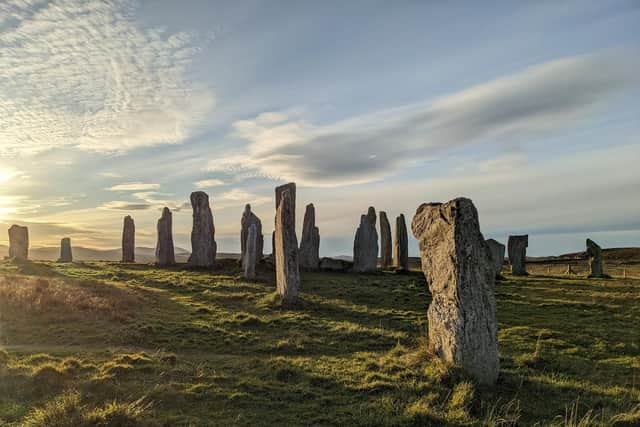Calanais standing stones: Sensors fitted at ancient site to manage visitor boom
Work is underway at the site of the 5,000-year-old stones, which are thought to be a form of astronomical observatory, to better understand patterns of visitors and predict busy periods.
Already the busiest tourist site on the island, visitors are expected to swell with the arrival of large cruise ships to the new £60 million deep water terminal at Stornoway, which is due to open next year and treble visitor numbers to the island.
Advertisement
Hide AdAdvertisement
Hide AdCalanais welcomes around 150,000 visitors a year, with the number to rise to 200,000 by 2025. The visitor centre is in the midst of a £6m upgrade, with a proposal to go to Scottish ministers to start charging non-islander an entry fee.


Sensors will be used to gather information about the number of people attending the site at one time, with data collected then displayed via a dashboard where the Calanais team can monitor numbers as the clock up. If the site is particularly busy when cruise passengers arrive at the harbour, for example, they could be advised to visit the attraction at a quieter point of the day.
Mark Davies, project manager of the Calanais 2025 project, said: “The Calanais Stones are a must-see for visitors to the island and while the site has coped with large visitor numbers, car parking is often limited.
"We have an opportunity to better manage the peaks and troughs throughout the day. Visitors to the islands bring fantastic opportunities for the local community and businesses, but it is important that we ensure they have the best possible experience while here and we have the infrastructure and capacity to make their visit memorable.”


The technology has been developed by CENSIS – Scotland’s innovation centre for sensing, imaging, and Internet of Things (IoT) technologies – in partnership with Highlands and Islands Enterprise area team on Lewis, the HIE Innovation team and the Outer Hebrides Cruise Forum.
Ally Longmuir, business development manager at CENSIS, said: “The aim of this project is to help the Calanais team gain a better understanding of visitor numbers at one of its most popular attractions, enabling businesses to plan ahead for staffing, stock and opening hours. This technology can provide accurate real-time data that will undoubtedly support the booming tourism industry in the islands, and we’ve seen success from similar initiatives in the past involving sites on the West Highland Way.”
It is expected sensors will be installed at other sites across the islands to manage visitor numbers at key locations, which include Gearrannan Blackhouses in Lewis and Luskentyre Beach in Harris, both which struggle with road access and parking.
John Mackenzie, senior development manager of innovation at Highlands and Islands Enterprise, said the Calanais project was a “great example” of technology being used to maintain the visitor experience while managing infrastructure and the environment.
Advertisement
Hide AdAdvertisement
Hide AdIn Orkney, now the most important UK cruise destination, some historic sites have suffered under the rise in footfall. At the Ring of Brodgar, the Neolithic stone circle, sections of path have been closed to visitors on days when large numbers of cruise ship passengers are expected given erosion at the 4,500-year-old landmark.
Comments
Want to join the conversation? Please or to comment on this article.